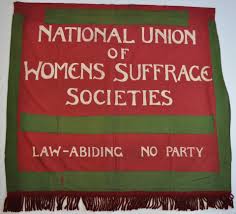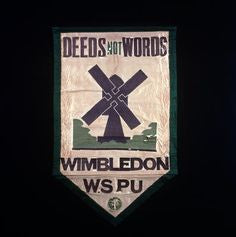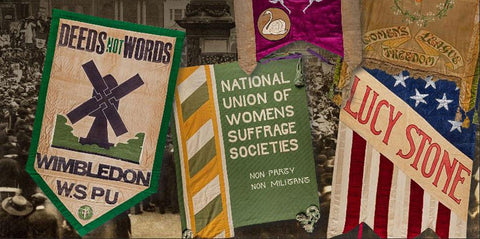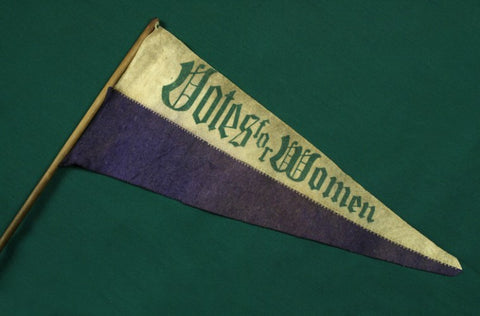100 Years of Women's Suffrage - Suffragette Banners - Creative Craft to make a Political Statement
Posted by Sally Lees on
It is widely documented that the treasurer of the Women's Social and Political Union, Emmeline Pethick Lawrence, first devised a colour scheme for the WSPU hoping to unify the Suffragette movement. These colours, purple for loyalty and dignity, white for purity and green for hope, provided instant visual recognition of who was a suffragette and who supported suffrage. Most banners, posters and badges incorporated this combination of colours which remain the one most widely recognised and associated with the Suffrage movement today.

However, as in any political movement, there were variations. As there were many other Suffrage organisations each chose distinct colours to represent and differentiate themselves. In the case of the National Union of Women's Suffrage Societies, (NUWSS) this was to distance themselves from other more millitant groups, particularly the WSPU (the Pankhurst group), as they feared it would hurt the cause. One colour that most of the banners included was green as it was defined as the colour for hope. Examples of this are the Women's Freedom League with their green, yellow and white banner and the banner of the National Union of Societies for Equal Citizenship which was green, red and white.

The Women’s Freedom League (WFL) is a suffrage group that has mostly been overlooked. The group formed in 1907 as a break-away group of the WSPU as they disagreed with their undemocratic leadership. Despite the WFL's militant stance, it was non-violent and opposed the WSPU’s campaign of arson and vandalism. The WFL’s colours were white, yellow and green and its motto was ‘Dare to be Free’.

Women at the time were well versed in dress making and sewing so were able to effectively use these skills to make banners for the cause. Making the banners provided the opportunity to come together and collaborate. The banners represented the women and their organisations' individuality but also their unity. Most of the banners were fabric, but some as seen in the 'Wimbledon WSPU' banner below used mixed media with paper and fabric combined.

Banners from the 1908 march can be seen at The Museum of London and The Women's Library at the London School of Economics.

My favourite banner is a beautifully hand painted one which according to the curator, featured in 'Silk Satin and Suffrage' film made by Digital Drama, still has the pencil guide marks on it.
Watch Digital Drama's film celebrating the wealth of creative talent these banners convey and how decorative craft really did make a difference to the perception of the suffrage movement at that time despite their political and subversive imagery.

Digital Drama have partnered up with museums, archives and arts organisations across Greater London working with community groups and artist Becci Kenning of www.art-in-transit.com to create 100 Banners inspired by the suffrage banner collection held in the archives of the Women’s Library at LSE.
The banners will be used on the March4Women march on 4th March 2018 led by Helen Pankhurst to celebrate the anniversary of the Representation of the People Act. They will also be used on the International Women’s Day on March 8th, and at the WOW Festival at the Southbank on the 11th of March 2018. A selection of 100 Banners will then be displayed at the Royal Albert Hall, the Women’s Library at the London School of Economics, the House of Lords and various partner venues around Greater London during 2018.
#Suffragettes #Vote100 #100Banners #Womenshistorymonth #Inspiringwomen
Share this post
0 comment

